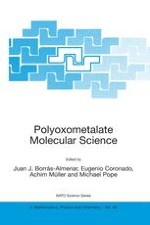Polyoxometalates (POMs) form a large, distinctive class of molecular inorganic compounds of unrivaled electronic versatility and structural variation, with impacts ranging from chemistry, catalysis, and materials science to biology, and medicine. This book covers the basic principles governing the structure, bonding and reactivity of these metal-oxygen cluster anions and the major developments in their molecular science.
The book comprises three sections. The first covers areas ranging from topological principles via synthesis and stability to reactivity in solution. It also focuses on the physical methods currently used to extract information on the molecular and electronic structures as well as the physical properties of these clusters. The second part reviews different types of POMs, focusing on those systems that currently impact other areas of interest, such as supramolecular chemistry, nanochemistry and molecular magnetism. The third section is devoted to POM-based materials and their applications and prospects in catalysis and materials science.
